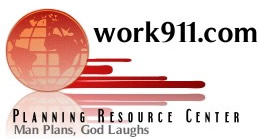It's Spring - Time For A Compensation Program Tune Up
By Sharon Terry
Editor's Summary: One of the primary responsibilities of a Human Resources department is ensuring that the company's employees are compensated equitibly. According to this article, using the current market to determine salary adjustments is not sufficient. Listed within, are some other aspects and methods to consider when you are planning compensation changes.
Now that winter has passed, the annual ritual of spring cleaning is in full swing. Spring cleaning is more than cleaning the windows and clearing the cobwebs that hid in the corners during the winter. “Spring is a time to take a serious look at your compensation program and begin planning for the next budget cycle. Depending on your organization's fiscal year, it may also be time to determine appropriate market adjustments and pay increases for the coming year,” said Michael Maciekowich, National Director, Astron Solutions.
Compensation program spring cleaning is more than looking at the market and determining adjustments. It is a time to step back and determine if the system remained in alignment with organizational and employee needs. Most organizations have long-term strategic plans with short-term objectives to determine progress. A compensation program designed at the beginning of a long-term strategic cycle also needs flexibility to address yearly short-term organizational objectives. As new objectives come to the forefront, or current ones are modified, the compensation plan must also change.
This is a different way of thinking about compensation programs. There are a number of tools and processes to help with this matter. One is a survey of the compensation program's effectiveness for users, including executive management, department management, and employees. The focus of this annual survey is the following:
• What aspects of the current compensation program were most effective in the past year?
o What aspects seem to have had a positive impact on employees in terms of retention and morale?
• What aspects of the current compensation program were least effective in the past year?
o What issues did human resources seem to spend the most time discussing with employees and managers?
• What should be the focus of the compensation program in the coming year? o What are managers' and employees' expectations in terms of compensation determination? • What will prevent this from happening?
o To what extent do managers and employees understand current financial issues facing the organization?
With this understanding, human resources must answer the following five questions:
• What external market challenges or pressures will be placed on the compensation system in the coming year?
o Has the market shifted? Is there a new strategic need in the organization that will alter our market focus, either by type of job or market definition? Is the organization in a position to remain competitive?
• What internal job equity challenges or pressures will be placed on the compensation program in the coming year?
o If a job evaluation system is used, are the factors and factor weights applicable based on current strategic direction? If not, what modifications are required?
• What employee equity challenges or pressures will be placed on the compensation program in the coming year?
o Have recent market adjustments and system modifications forgotten the employees? Are we able to attract employees without causing internal pay compression?
• What financial challenges will impede the ability of the organization to successfully fund and implement needed compensation program elements?
o Can the organization sustain past financial commitments to the compensation program? If not, how will spending priorities be set?
• What changes need to be made as to how employees are recognized and rewarded for their contributions to the organization?
Do the current recognition and reward mechanisms work to motivate employees to contribute to the organization's strategic direction? With these questions answered, human resource next must develop a strategic response. Take the five questions above and overlay the four question survey responses. This helps to develop a strategic response to each of the five key compensation issues.
Here are basic examples of the thought process for auditing current compensation processes:
• External Equity Issues: Most effective. Continue current process.
• Internal Equity Issues: Least effective. Additional focus on internal job placement required.
• Employee Equity Issues: Least effective. Serious compression issues developed that need further action.
• Ability to pay issues: Most effective. Required funding of the program is understood and available.
• Reward and Recognition Issues: Most effective. High level of satisfaction with current performance assessment and rewards systems. With this information in hand, the final step is to create a focused strategic response to present to senior management. The result is a fresh look at your compensation program and a focused direction for the year ahead.
Michael Maciekowich is a National Director for Astron Solutions. His areas of expertise include the development, design, and implementation of executive, physician, and employee total cash compensation and performance management systems in all industries. His primary focus is the integration of compensation and human resource strategies with organization-specific missions, visions, values, and strategic operating plans. Michael has twenty-five years of consulting and industry compensation experience. He can be reached at 800-520-3889 or michaelm@astronsolutions.com.
Astron Solutions is a consulting firm dedicated to the delivery of HR consulting services and supportive technology. For more information about giving your compensation program a spring cleaning, please call Astron Solutions at 800-520-3889.
Sharon Terry
Article Source: http://EzineArticles.com/
